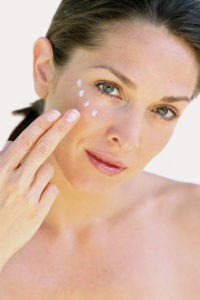Dual-Protection Sunscreens

It is now recommended that your sunscreen have an equal proportion of SPF and PFA to provide maximal protection.Understanding the methods to measure sun protection is also important (so you know what products to buy) but is usually not understood by most consumers. The SPF system (Sun Protection factor) applies only to UV B protection. SPF 15 blocks 93%, SPF 30 97%, SPF 45 99%, so a minimum SPF would be 15. UV A light, however, is not covered by the SPF grading system. It is graded by the relatively unknown PFA system. (Protection Factor Ultraviolet A) PFA correlates well to the SPF system meaning, for example, if you normally begin to tan or burn after 20 minutes in the sun, a PFA of 15 will extend your protection 15 times longer, or 300 minutes.
New UV A filters are being introduced in the marketplace. Meroxyl, for example, was approved in 2006 and has been widely used in Europe and Canada for years. You will see this in many sunscreen products today.
Dr Barry Eppley
Indianapolis, Indiana


